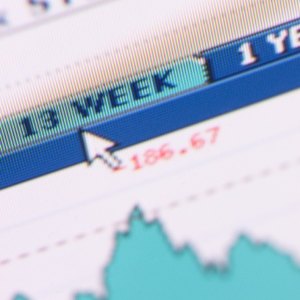
There are few limitations to stop an investor from the process of buying a stock, selling the stock and then buying it back again as a longer-term holding. In fact, the investor's broker will be pleased to earn the extra commissions in such a series of transactions. However, all investors should be aware of several rules governing the rapid buying and selling of stocks. Violating certain rules around buying and selling stocks can result in penalties and tax consequences.
Can an Investor Sell a Recently Purchased Stock?
When an investor buys shares of stock, she has three days to pay for the purchase by depositing the money with her broker. This is referred to as a three-day settlement. If the purchased shares are sold within the three-day period – without the investor paying for the initial purchase of the shares -- the act is called freeriding. Freeriding is prohibited by Regulation T of the Federal Reserve Board.
Freeriding only occurs in a cash account according to Fidelity, not a margin account. If an investor is found to be freeriding, their account may be frozen for up to 90 days, and stock purchases will only be accepted if money is in the account to immediately pay for the shares.
Read More: Can You Sell Purchased Stock Before a Settlement?
IRS Rules Regarding Buying and Selling
The wash sale rule prevents an investor from selling stock to cover a tax loss and then immediately repurchasing the shares. To have a loss from the sale of stock qualify as a tax write off, the investor must wait at least 30 days before repurchasing the shares. If the shares are bought within 30 days of the sale, the IRS will rule the transaction a wash sale and disallow any tax write-offs. This rule prevents taxpayers from having both a gain and loss from the same security within 61 calendar days (30 days prior and 30 days after).
Wash sale rules prevent offsetting capital gains with capital losses on an investor's tax return. The IRS, however, will allow the wash amount to count toward the new basis when the new shares are sold. Some traders try to circumvent this rule by selling stocks that move similarly to the sold stock due to correlation. This is an attempt to confuse the IRS rule of a "substantially identical stock."
Read More: How to Calculate a Wash Sale
Long vs. Short Term Capital Gains
Stock investments held for less than one year and sold for a profit are considered short-term capital gains. Short-term gains are taxed at the investor's regular tax rate. If the stock is owned for longer than a year, long-term capital gains tax rates apply. Long-term gains are taxed at a much lower rate than short-term gains. Owning shares of stock for only 30 days is not long enough to qualify for the lower tax rates, and as a result, any gains will be taxed at the investor's regular rates.
What Are Day Trader Warnings?
The IRS requires special designations for specific industries and professions, such as professional stock trading. The rapid buying and selling of stock can trigger the requirement to have the investor's account designated as a pattern day trading account. A day trade is the purchase and sale of a stock in the same trading day.
If an investor day trades more than four times in any five day period, he will be designated as a pattern day trader. Day traders must be registered with the IRS. A pattern day trading account must maintain minimum investor equity of $25,000, and cash withdrawals are restricted.
Read More: How to Report the Sale of a Call Option
References
Writer Bio
Tim Plaehn has been writing financial, investment and trading articles and blogs since 2007. His work has appeared online at Seeking Alpha, Marketwatch.com and various other websites. Plaehn has a bachelor's degree in mathematics from the U.S. Air Force Academy.

